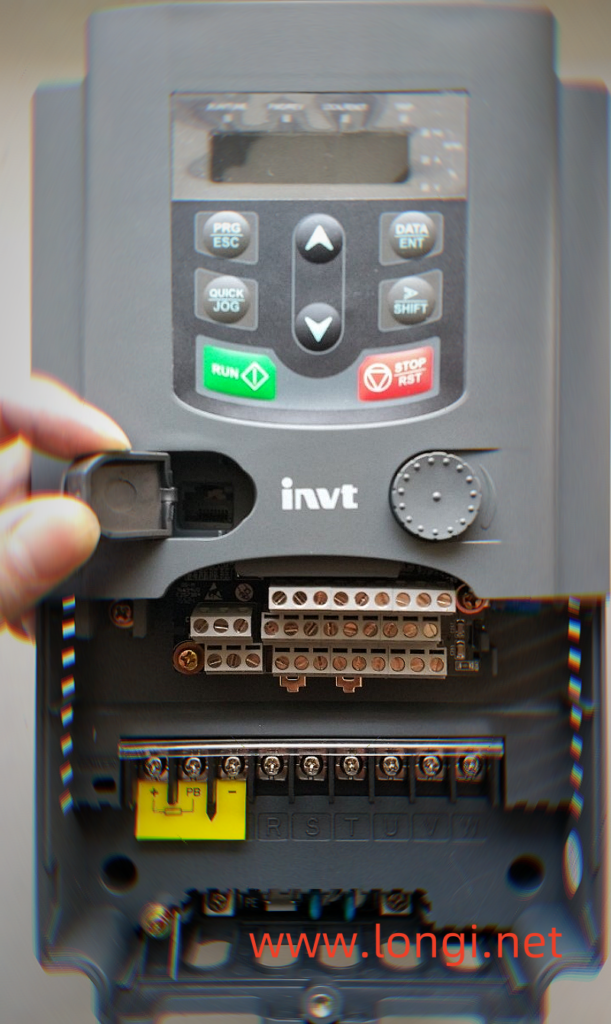SC: Refers to a short circuit in the output load of the frequency converter. In the state of power outage, there is no short circuit between U, V, W and between U, V, W and DC P, N. To distinguish whether it is a current detection circuit fault on the CPU motherboard or a signal returned by the driving IC, short circuit the signal to the diode side of the optocoupler device with a wire, and operate the RUN key after power on. The output frequency displayed on the panel is normal. The SC signal is returned by the driving IC, and there are two reasons for the malfunction: first, the inverter module is damaged, and second, the driving IC itself is faulty.

After cutting off the power supply to the inverter module, the six pulse signals of the drive IC were checked again. It was found that the U-upper arm drive IC had input pulses but no output pulses (static negative pressure normal). After replacing the drive IC, the output was normal. The static negative pressure of the U lower arm drive IC is only a few tenths of a volt. After replacement, the fault still persists. After welding the 100 ohm resistor connected to the trigger end of the inverter module, the static negative pressure rises to the normal value. The forward resistance of the lower arm terminal of the module U is consistent with the resistance of other trigger terminals, but its reverse resistance is slightly smaller than that of other trigger terminals, indicating that the circuit inside the U-phase trigger terminal of the module is damaged!
This is a key point in checking module faults: the resistance of the main terminal cannot be roughly measured to be normal, which means that the module is good. It is not uncommon for the circuit inside the triggering terminal to be damaged, but it is more concealed! When the frequency converter reports an SC or OC fault and the main terminal of the detection module is normal, the inspection of the forward and reverse resistance of the triggering terminal should not be missed!
The damage of modules and the damage of driving ICs are usually related: when the U-phase main circuit is damaged, the upper and lower arm driving ICs of the U-phase are often also damaged by strong voltage shocks; When the driver IC of the phase is found to be damaged, it often hides the internal circuit damage of the triggering terminal of the phase. So one of the two is that a comprehensive inspection must be conducted. Of course, there are also cases where modules and driver ICs are damaged separately, but it is extremely rare.

During maintenance, another phenomenon of drive IC failure was also discovered in the low-power model of the Envision GS: when the frequency converter is powered on and there is an SC fault signal output, the CPU performs self check, reset, and reset, and after clearing, the panel only displays H:00, and all panel buttons fail to operate. When the corresponding optocoupler circuit is short circuited to eliminate the SC signal, all panel operations are normal. If the model detects an SC fault signal output when powered on, it may perform a “program lock” and refuse to operate! When this phenomenon occurs, the fault signal output circuit should be checked and corresponding measures should be taken to temporarily eliminate the fault signal, in order to facilitate operation and judgment, and thus solve the fault.
